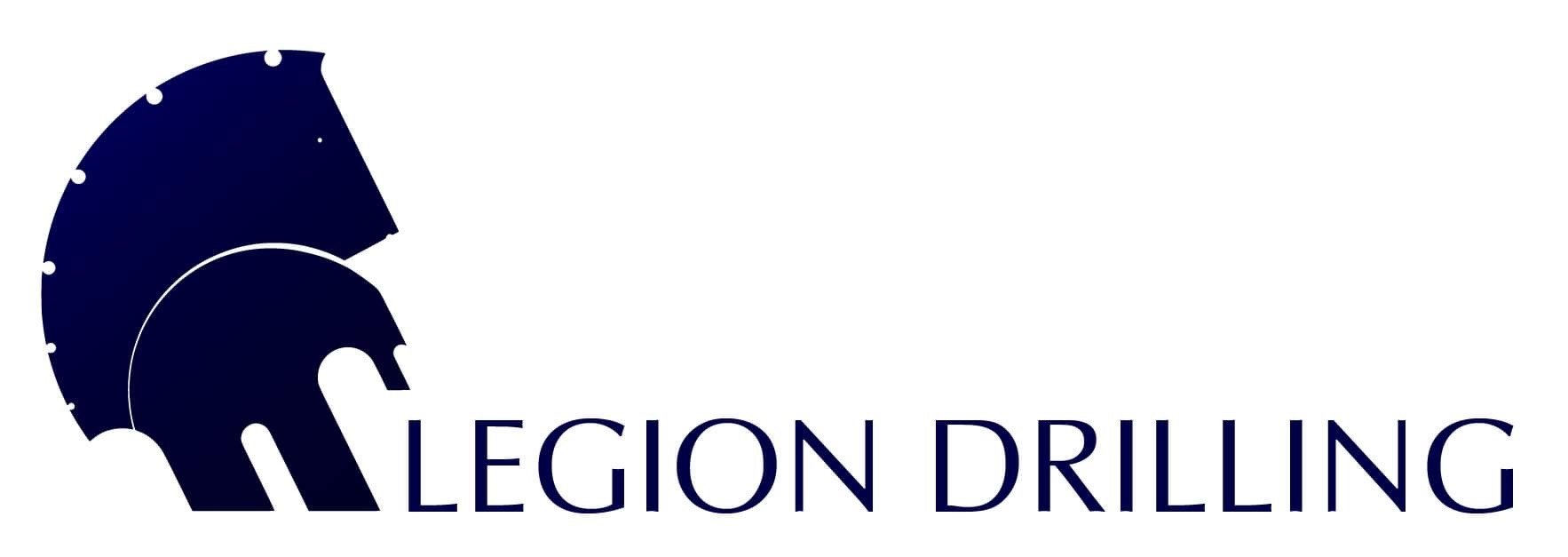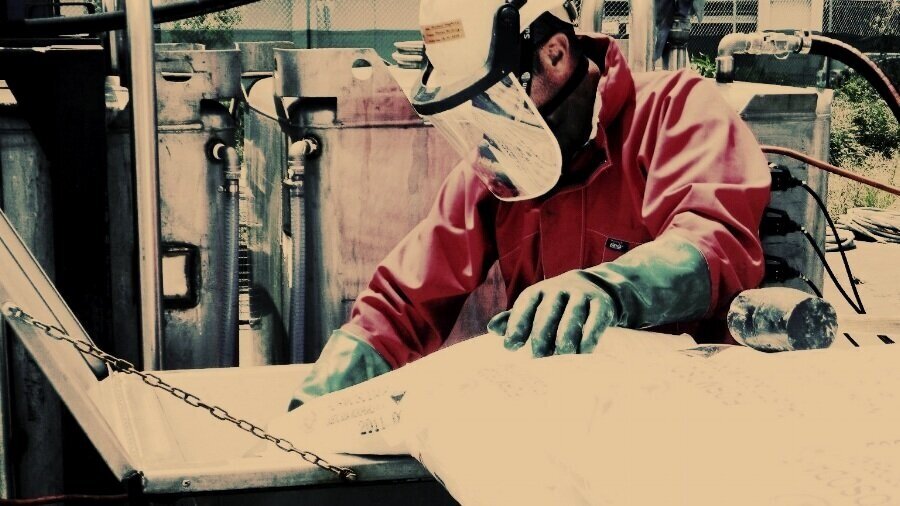Chemical Injection (In-Situ Chemical Oxidation)
IN-SITU CHEMICAL OXIDATION/REDUCTION (ISCO/ISCR) FOR REMEDIATION OF PETROLEUM HYDROCARBONS AND CHLORINATED COMPOUNDS
Legion Drilling can assist your organisation in the design and implementation of In-Situ Chemical Oxidation (ISCO) and In-Situ Chemical Reduction (ISCR) systems for safe, rapid, and targeted treatment of contaminated soil and groundwater.
In-situ chemical injection is one of the most effective and widely adopted environmental remediation methods. It involves the delivery of amendments into target treatment zones to transform and destroy a wide range of organic contaminants, including recalcitrant chlorinated solvents such as trichloroethylene and petroleum hydrocarbons such as petrol, diesel, and crude oil.
MAJOR BENEFITS
Rapid reduction of contaminant concentrations.
Little remediation-derived waste. No excavation or pumping required.
Able to treat mixed/commingled plumes.
Synergies with other remedies exist (e.g. natural source zone depletion—NSZD—, monitored natural attenuation, etc.). Oxidants may help to establish aerobic biodegradation conditions and enhance desorption phenomena.
Multiple injection events and combination with other technologies may lead to effective treatment of source zones.
Stringent remediation goals can be achieved in sites where NAPL (LNAPL or DNAPL) is absent.
ISCO treatment does not generally pose a long-lasting, negative impact on the existing microbial communities and biogeochemical conditions.
Non-corrosive amendments compatible with underground infrastructure are available.
UNRIVALLED CAPACITY TO DELIVER ISCO AND ISCR PROJECTS AUSTRALIA WIDE
Legion Drilling has unrivalled capacity to deliver ISCO and ISCR projects in a cost-effective and precise manner thanks to our arsenal of drilling rigs, specialised chemical injection equipment, and expertise using direct sensing tooling (MiHPT, UVOST) for high-resolution remedial design characterisation. We mobilise the equipment from our locations in Brisbane, Sydney and Cairns.
We offer a range of injection systems to suit a wide variety of applications and can modify each system for project-specific requirements.
We work with the most important manufacturers of oxidants in the environmental industry to ensure that you have access to the product that better satisfies your project requirements.
COMMON REAGENTS
Multiple oxidant reagents (frequently accompanied by enhancements, activators, and catalysers) are available to suit the needs of every project.
Hydrogen peroxide (including Fenton’s reagent which incorporates an iron catalyst)—H2O2
Sodium/Potassium permanganate—NaMnO4/KMnO4
Sodium persulfate—Na2S2O8
Sodium percarbonate—Na2CO3·1.5H2O2
Ozone—O3
For ISCR, some of the most common amendments include micron- or nano-sized Zero Valent Iron (ZVI) and polysulfide foam.
The amount of amendment required in a contaminated site is typically estimated through one of the following methods:
Stoichiometric calculation accounting for the natural amendment demand of the hydrogeological medium.
Pilot testing.
Based on previous experiences from sites with similar subsurface characteristics.
EFFECTIVE INJECTION STRATEGIES FOR OPTIMAL AMENDMENT DELIVERY
Ensuring effective contact between amendments and contaminants is one of the key factors behind the success of in-situ injection projects.
Consequently, Legion Drilling provides high-resolution remedial design characterisation capabilities (UVOST, MiHPT, and soil and groundwater sampling) to precisely delineate contaminant distribution, preferential migration pathways, and low-permeability zones at centimetre scale. This allows for tailored design of delivery intervals and avoids wasting reagents in non-contaminated areas, which is a typical scenario when long-screened wells are used for delivery purposes.
Furthermore, Legion Drilling offers a range of amendment delivery methods, including:
Direct push for tailored remedial implementation targeting contaminated intervals (recommended).
Fixed wells and boreholes allowing for recirculation strategies (well screens specifically designed according to high-resolution characterisation data).
Our equipment can be used at pressures as low as 5 psi to avoid disturbing the formation.
Multiple strategies can be adopted to select the location of injection points for ISCO and ISCR systems:
Regular grid pattern over the entire target treatment zone.
Inject and passive drift addressing the advective groundwater flow in the target treatment zone (still limited by the reactivity of the geological medium with the selected amendment).
Recirculation through fixed wells (possible in sites with relatively high transmissivity).
Judgemental design.
FAQs
What contaminants can be treated with these technologies?
A wide range of organic contaminants, including recalcitrant chlorinated solvents such as trichloroethylene and petroleum hydrocarbons such as petrol, diesel, or crude oil.
What subsurface conditions are favourable for the application of ISCO agents?
Relatively homogeneous, permeable media with low natural oxidant demand (including low content of natural organic matter and reduced metals) and low-to-moderate contaminant concentrations.
In heterogeneous environments, our direct sensing tools (MiHPT, UVOST) allow for precise design of amendment delivery intervals, thus contributing to the effective contact and mixing between the reagents and the subsurface contaminants. This will minimise costs and risks associated with poor understating of site dynamics and contaminant distribution.
If low-permeability zones are predominant, consider an alternative technology such as BOS 200®, a biological and carbon-based solution designed to trap and treat petroleum hydrocarbons (including NAPL source zones).
Can ISCO technology be used to treat source zones?
Yes, as part of a larger remediation plan and frequently requiring multiple injection events. It should not be used as a stand-alone option in these scenarios.
What are the key points to keep in mind for the successful design and implementation of an ISCO program?
Ensuring sufficient contact between the oxidant and the contaminant is paramount. High-resolution data should be used to design the injection plan. The subsurface characteristics (type of geology, groundwater flow direction and velocity, presence of preferential migration pathways and low-permeability zones, natural amendment demand, and so on) should be well understood.
In addition, the type of amendment (Fenton’s reagent, persulfate, permanganate...) and its dose should be carefully selected. Treatability testing is encouraged.
And don’t forget to locate all the subsurface infrastructure and utility lines prior to any drilling works!
Where can I find more information?
Our remediation technicians will be happy to provide further information and discuss in detail any specific project requirements.
In the meantime, we recommend you to consult the following documents:
CRC CARE (2019). Technology Guide: Groundwater – In-Situ Chemical Oxidation. National Remediation Framework. Newcastle, Australia: CRC for Contamination Assessment and Remediation of the Environment. https://remediationframework.com.au/download-nrf-guidelines/14-in-situ-chemical-oxidation/file
Crimi, M. (2020). Chemical Oxidation (In Situ - ISCO). Enviro Wiki. https://www.enviro.wiki/index.php?title=Chemical_Oxidation_(In_Situ_-_ISCO)
ITRC (2020). Optimizing Injection Strategies and In situ Remediation Performance. OIS-ISRP-1. Washington, D.C.: Interstate Technology & Regulatory Council, OIS-ISRP Team. https://ois-isrp-1.itrcweb.org
Siegrist, R. L., Crimi, M., & Simpkin, T. J. (Eds.). (2011). In Situ Chemical Oxidation for Groundwater Remediation (Vol. 3). Springer Science & Business Media.



